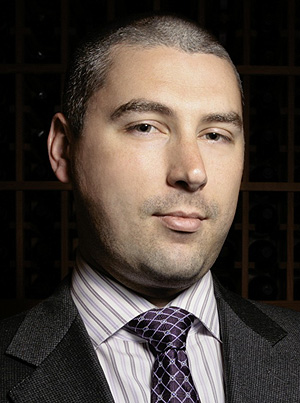

What’s the most memorable wine that you opened this year?
A couple came in and the gentleman ordered a 1982 Giacomo Conterno Barolo Riserva Monfortino, which was on the list for nearly $2,000. After I decanted it and served it, he said it was over the hill, or something like that, and sent it back. The customer is always right, so I couldn’t do anything about it. He ended up ordering 1990 Sassicaia instead. But the Barolo was perfect, so we left it in the decanter for about three hours and after service we all sat down and drank it ourselves. It was deep, dark and powerful, still so full of fruit, and the tannins had softened to a perfectly enjoyable state. Absolutely delicious.
Do you think that Americans, in general, are becoming more comfortable with Italian wines?
Definitely. It’s been a gradual thing over the last few years. When I started, nobody knew much about Italian wines. Now we have people coming in and asking for more esoteric varietals. They’ll say, “I had a really good fiano di Avellino last night, do you have anything like that?” For people to recognize indigenous varietals like that—that’s great.
People who come in here with a bit of experience are often going straight for Barolo or Barbaresco. But with the less experienced, we don’t necessarily steer them right toward Barolo. That’s the toughest thing: finding wines for people who love juicy zins. We can do Amarone, maybe? We steer them toward sangrantino and montepulciano, things that are closer to what they’re familiar with. And those wines are often $80-100, so they’re good for people who don’t have as much experience.
What regions have you been giving more attention to lately?
Liguria, especially the whites from Liguria. We made it more of a focus this year with vermentinos and pigatos—salty, mineral-driven wines.
On the red side, Sicily and Sardinia. We’ve been growing in those two regions every year, but they seem to just keep getting better and better, especially Etna. And the prices are so reasonable.
For an Italian restaurant, you sell a fair amount of Champagne. Is there anything novel about how you approach Champagne?
For Champagne, we started listing disgorgement dates this year. The thing that pushed us over the edge was that we ended up with two different bottlings of the Jacques Selosse Initial, with two different disgorgement dates. We still have both of them on the list, with different dates, different prices. They can be totally different wines when you talk about grower-producers like that.
I don’t think guests care about it yet, but if there’s more education, they will care about it. I think it’s going to take a long time for wineries and restaurants to catch on, but someday it will be a big deal.
Plus, you have a solid group of Italian sparklers as well. How do those wines do?
Everybody knows Prosecco, or thinks they know it, and they love it. We sell it to people who are looking for more fruit, a little more residual sugar.
Franciacorta is literally the Champagne method, except instead of pinot meunier they use pinot bianco. I pretty much sell it on the fact that it’s really good wine, but nobody knows it, so it’s a lot cheaper than Champagne.
It seems that consumers find Champagne, unfortunately, to be mostly a celebratory wine, but with Proseccos or other Italian sparking wines, they are more interested in ordering it as a wine, rather than just for a celebration.
Your dessert wine list is pretty diverse. What’s been the most successful there?
We sell a lot of dessert wines, but more Italian dessert wines than Ports. Although we sell a lot of the Taylor 20 [Year Old Tawny]—it’s a comfort zone for a lot of people. The most common thing we sell is Vin Santo. We have a Bourbon caramel semifreddo with amaretti crumbs that’s just perfect with that. Barolo Chinato, we love that. Moscato is popular—everybody loves moscato. And we have a crazy wine from the Marche that’s lacrima di morro d’Alba fermented with wild cherries.
Longtime senior editor at Wine & Spirits magazine, Luke now works for the Stanford Technology Ventures Program.
















